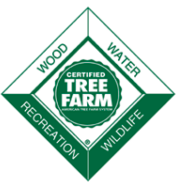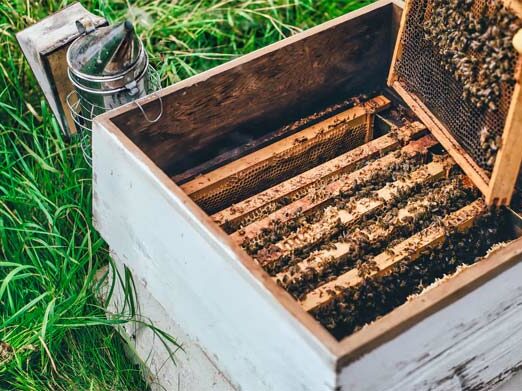SUSTAINABLE FORESTRY
It's what we do.
“We practice some of the the best silviculture in the industry, making it a very sustainable forest.” - Jerry Altman
Superior Pine’s land base has been certified under the American Tree Farm System since 1948, and we are proud to be associated with the oldest certification program for family forests in the United States. To maintain the American Tree Farm standing, Superior Pine’s forest operations team completes third party certification audits annually to verify that we conform to the American Forest Foundation Standards of Sustainability. The culture for sound and responsible stewardship is as much a part of our future as it has been our past.

The Numbers
7,000 acres of sandy gumbo soil beds. The team put 4 million baby pine trees in the ground in 2018.
Lifecycle
Site prep - clean property, prepare beds for planting. Inventory Cruising - 7-12 year old tree assessments.
Output
Harvest of 16-25 year old trees for premium timber, chip-n-saw timber and pulp wood.
TYPES OF TREE HARVEST - PRODUCT CLASS
Diameter of tree at bottom cut:
Premium Timber: 10”-14” at the base cut, minimum 25’ long
Chip-N-Saw Timber: 8’’-5” at base cut, min. 29’ long
Pulp Wood: 3” at base, min. length 16’ long
LOG TRUCKS
Each truckload is all one designation of product class (i.e. Chip-N-Saw timber).
Tags with logo and designation are stapled to a cut timber on the truck - this ensures the right tree goes to the right mill.
Anyone on the Superior Pine team can quickly look at the truck and know what type of cut is on the truck and double check the designation tag for QC.
HEALTHY ECO-SYSTEM - BEE SPA
The Superior Land Bee Spa: Did you know bees are moved around as they are foraging for nectar? Bees come visit the Superior land where they live in our beautiful clean environment for approximately a month in the Spring, gathering nectar from our gallberry bushes.
We have approximately 11 commercial beekeepers who place their hives on company owned land. These beekeepers lease land from SPP to take advantage of the gallberry nectar flow which occurs on the forest from late April to late May.
Gallberry, sometimes called inkberry in other regions, is in the holly family, and produces a high quality table honey. Gallberry honey is highly sought after in the retail markets as comb honey or liquid honey.
The bees are moved into the forest around late March to early April where they forage on gallberry blooms to make honey. Once gallberry bloom is completed the bees are moved out of the forest by the beekeepers and journey to another area, to either pollinate crops, or make honey from another floral source.

HEALTHY ECO-SYSTEM - BEE SPA
The Superior Land Bee Spa: Did you know bees are moved around as they are foraging for nectar? Bees come visit the Superior land where they live in our beautiful clean environment for approximately a month in the spring, gathering nectar from our gallberry bushes.
We have approximately 11 commercial beekeepers who place their hives on company owned land. These beekeepers lease land from SPP to take advantage of the gallberry nectar flow which occurs on the forest from late April to late May.
Gallberry, sometimes called inkberry in other regions, is in the holly family, and produces a high quality table honey. Gallberry honey is highly sought after in the retail markets as comb honey or liquid honey.
The bees are moved into the forest around late March to early April where they forage on gallberry blooms to make honey. Once gallberry bloom is completed the bees are moved out of the forest by the beekeepers and journey to another area to either pollinate crops or make honey from another floral source.